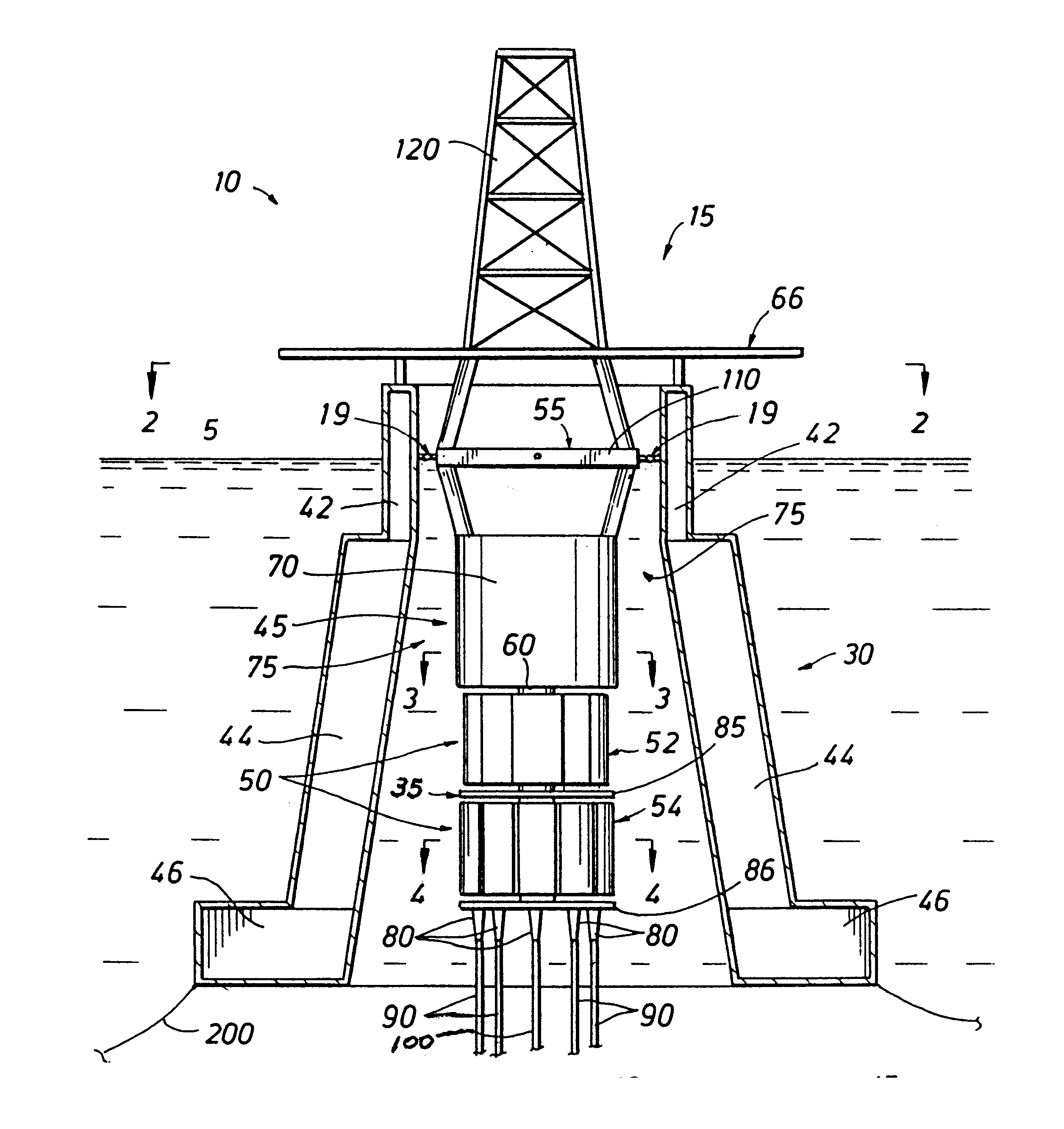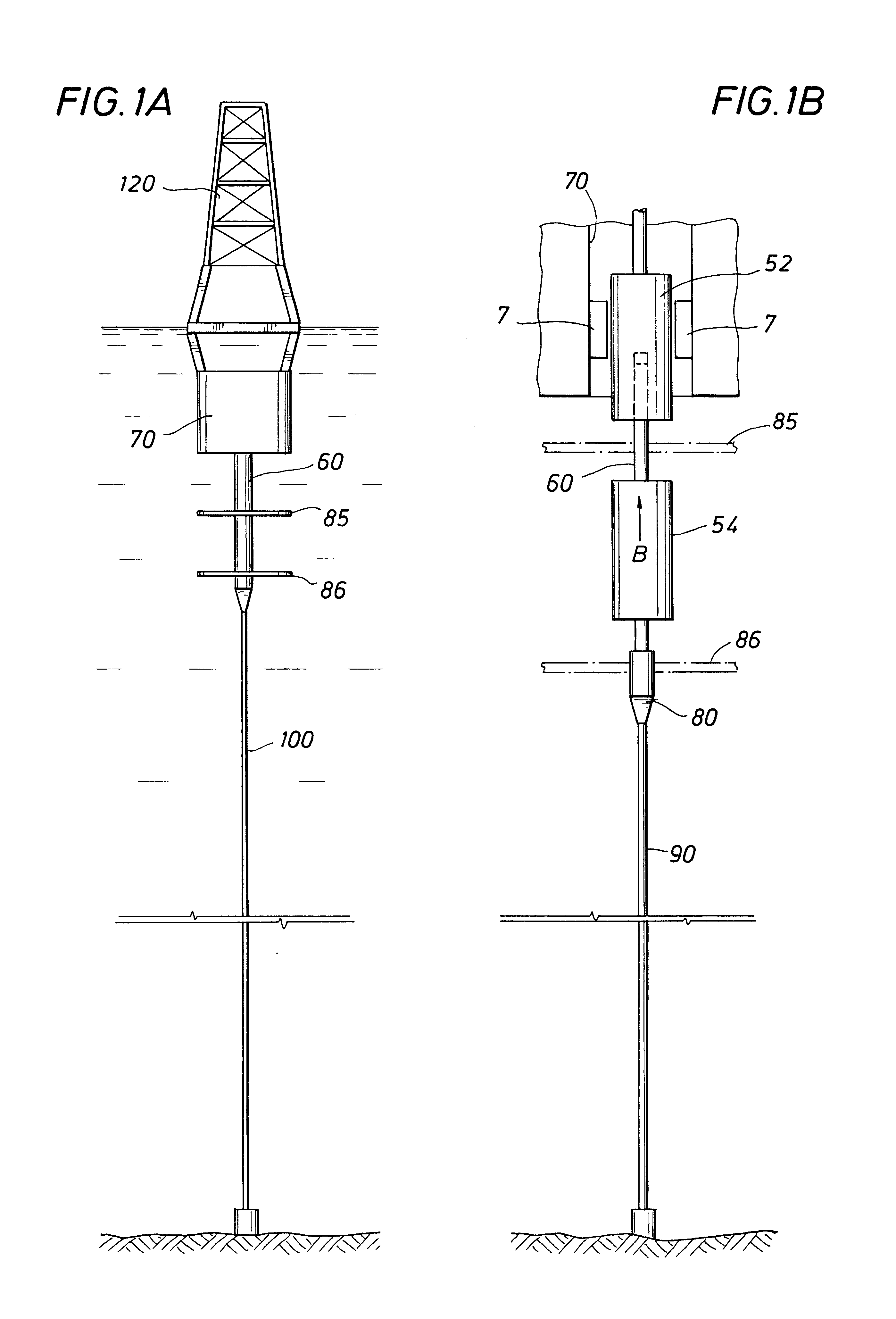Riser support for floating offshore structure
a technology for offshore structures and risers, which is applied in vessel construction, special purpose vessels, and borehole/well accessories, etc., can solve the problems of not being designed for drilling or extensive workover operations, the arrangement of riser supports does not permit individual riser length fluctuations commonly occurring, and the risers of this configuration are subject to cyclical bending
- Summary
- Abstract
- Description
- Claims
- Application Information
AI Technical Summary
Benefits of technology
Problems solved by technology
Method used
Image
Examples
Embodiment Construction
FIG. 1 illustrates the invention in an embodiment of a floating offshore platform 10. In this embodiment, the floating offshore platform 10 includes an inner structure 15 and an outer hull structure 30. The inner structure 15 includes a riser guide structure 35 and a support buoy structure 45 with a drilling draw works 120 mounted thereon.
The riser guide structure 35 is fixed with respect to the sea floor by means of at least one riser or tension member. A support buoy structure 45 is fixedly coupled to the riser guide structure 35. The outer hull structure 30 is coupled to the support buoy structure 45 by a connection mechanism 55. The heave, pitch and roll motions acting on the outer hull structure 30 are decoupled from inner structure 15 (riser guide structure 35 and support buoy structure 45) by means of the connection mechanism 55. Transfer of the heave forces on the buoy structure 45 to the riser guide structure 35 is reduced, if not completely eliminated, by means of the teth...
PUM
 Login to View More
Login to View More Abstract
Description
Claims
Application Information
 Login to View More
Login to View More - R&D
- Intellectual Property
- Life Sciences
- Materials
- Tech Scout
- Unparalleled Data Quality
- Higher Quality Content
- 60% Fewer Hallucinations
Browse by: Latest US Patents, China's latest patents, Technical Efficacy Thesaurus, Application Domain, Technology Topic, Popular Technical Reports.
© 2025 PatSnap. All rights reserved.Legal|Privacy policy|Modern Slavery Act Transparency Statement|Sitemap|About US| Contact US: help@patsnap.com



